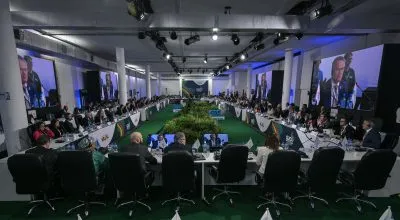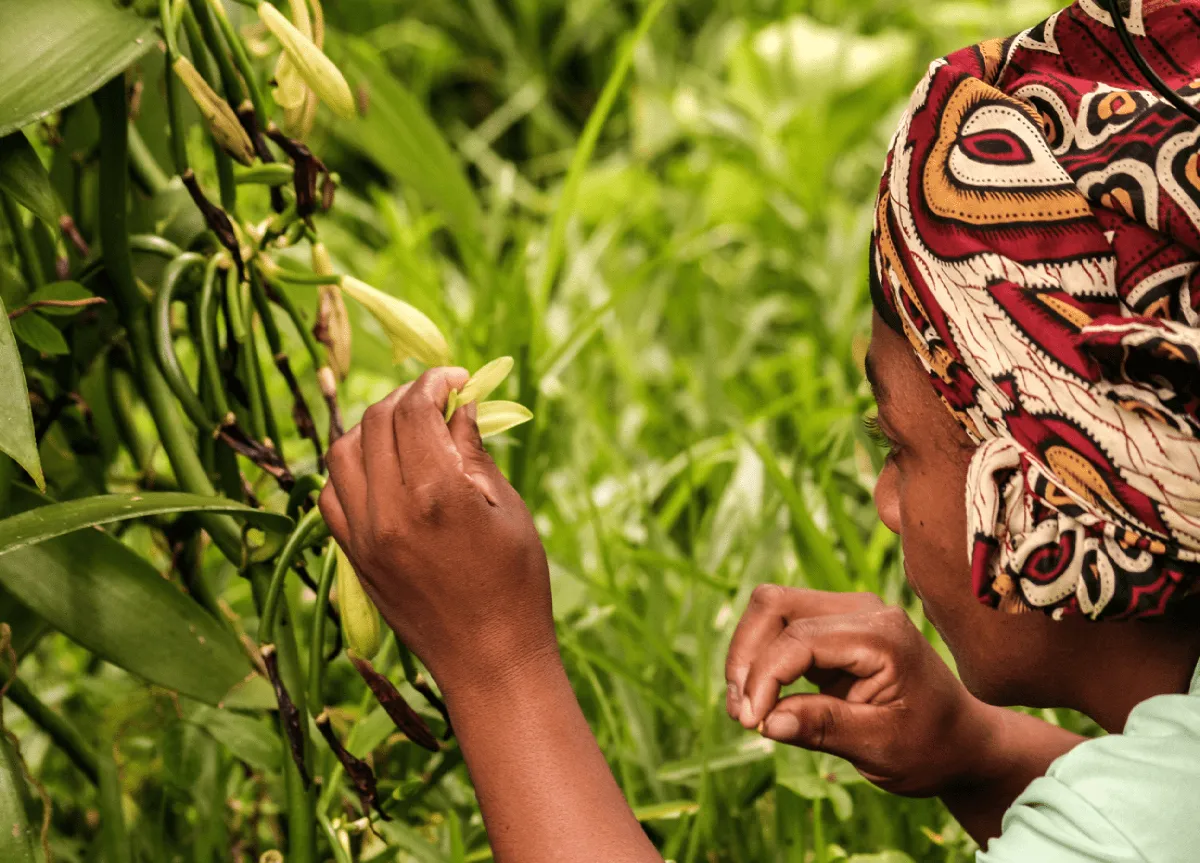While Africa is being hailed as the world’s new frontier economy, experiencing growth on a par with Asia, a spectre is looming; it threatens the economic revolution that Africa seems poised to seize – its agricultural sector remains in uncomfortably poor shape. It is no exaggeration to claim that Africa’s disappointing agricultural performance has been one of the region’s biggest failures since independence. Now experts warn that unless it gets to grips with its Achilles heel, the developmental breakthrough that investors and governments are anticipating for the continent in coming decades will not materialise. But is the region rising to the challenge?
As this Special Report reveals, while Africa’s Green Revolution has not yet happened, a combination of government policies, the agribusiness private sector, equipment and a new breed of commercially minded farmers are rapidly changing the African agricultural landscape for the better.
The recent transformation in Africa’s economic ‘brand image’ in the commercial world is probably one of the most dramatic in modern world history. As Africa rides the wave of a resources boom, its middle class swells, consumer demand mushrooms and conflicts become fewer. Exciting new figures are bandied about by investors and economists with barely contained enthusiasm: 6% growth forecasts for this year, a tripling of the middle class and productivity growing by 3% annually.
Yet food-related statistics tell a much more mixed story. Although production is rising, half of Africans still earn less than $2 per day and one third remain undernourished. These are mainly amongst the two thirds of the population that live in rural areas and rely on subsistence agriculture.
The current situation is testament to the fact that a Green Revolution comparable to the one experienced by Asia and Latin America in the second half of the 20th century has not materialised in Africa. The Green Revolution was a technological- and fertiliser-driven revolution in agricultural production. Stimulated by the introduction of modern varieties of food crops and improved agronomic practice, it led to a dramatic leap in productivity levels. As a result, the number of undernourished people in Asia plummeted from 41% in 1960 to 16% in 2000. And disastrous famines predicted in India and China never materialised. In fact, in the 1970s and ’80s, India’s food production doubled as a result of instituting its Green Revolution and today it is more than self-sufficient in food.
While the Green Revolution has stalled in Africa as a whole, one must keep in mind that several individual African countries are not only self-sufficient, but produce surpluses for export. The trend is promising: “There is a revolution – less dramatic and perhaps less visible – of farmers responding to improved opportunities resulting from higher global food prices and increased local demand from growing African cities,” Steven Schonberger, Regional Economist in the Western & Central Africa division at the Independent Fund for Agricultural Development (IFAD), a specialised UN agency, told African Business. “Agricultural growth rates in Africa are exceeding the rest of the world.”
“However, unlike Asia, where almost all of the increased production resulted from intensification using improved seeds, fertiliser and irrigation, in Africa this has been much less systematic as farmers often resort to expanding planted area rather than intensifying on existing farm plots.”
Not keeping pace with population
Moreover, food production has not kept up with the explosion of Africa’s population. While food production per capita has steadily decreased in the region over the last 50 years, the population has more than tripled and is projected to reach over 1bn by 2020. As a result, the value of annual food imports, a costly substitute for locally produced food that many cannot afford, is expected to rise to $11bn by 2020.
The International Food Policy Research Institute’s work suggests that Africa is now the only region in the world that will continue to grapple with significant food shortages and rising malnutrition levels in the future.
Experts attribute this situation to a number of factors: “Continued problems in seed, fertiliser and credit markets make it relatively more expensive and more risky to significantly increase the use of purchased inputs,” explains Schonberger of IFAD. “Another important difference is that labour costs are generally much higher in Africa, due in part to the availability of land as an option to lower wage employment,” he adds.
Some also cite African countries’ historically low investment in agricultural research and also blame the fact that much investment and experimentation in the sector has been the result of state intervention instead of being led by the private sector.
Crucially, both governments and international organisations, and the private sector, have also struggled to plug the understanding gap between themselves and subsistence farmers in order to negotiate the uptake of tools and technology. These are costly for farmers and entail serious changes in their centuries-old modes of production: “One thing we have seen from the recent increases in prices is that if farmers are able to see and benefit from higher prices, they produce more with or without external assistance – though they can do a lot more with a bit of help,” says Schonberger.
“However, most farmers, particularly smallholder farmers, continue to be physically and virtually distant from markets due to the transport problems of poor roads and excessively high trucking costs, and from market distortions, such as sudden export bans or failure to properly enforce import tariffs, excessive regulations and taxation of imported inputs not available locally.”
There is no doubt that Africa needs its own Green Revolution. A number of recent developments have also made Africa’s quest of higher farming productivity all the more urgent. One is the East African famine, which has raged over large swathes of the region, affecting Kenya, Ethiopia, Somalia and Djibouti since the summer of 2011, and is said to be “the worst in 60 years”.
The drought effectively represents a dire agricultural crisis for the region that jeopardises the livelihoods of nearly 10m people, not only in the countries directly affected by the drought, but also in neighbouring countries such as Uganda, Sudan and South Sudan, which are battling with the resultant food crisis. Rising global food prices are also increasingly worrisome for the continent, as a large proportion of Africa’s food is still imported from abroad. The benchmark food price index from the Food and Agriculture Organisation (FAO) rose 2% between December and February and food commodities jumped in the first three weeks of March, an omen that food prices will rise again in April.
The turning point?
However, as realisation that the economic breakthrough which Africa is on the cusp of could be jeopardised by its farming sector sets in, some African countries have shown a new appetite for serious investment in agriculture. 2003 is often cited as the turning point. In that year, African heads of states and government signed up to the Maputo Declaration on Agriculture and Food Security. Through the agreement, countries committed to increasing their agriculture budgets to at least 10% of their national budgets within five years.
Ever since, a notable shift in a handful of African countries’ agricultural policies has been clearly discernible, with Rwanda, Malawi, Mali and Kenya all securing agricultural investment levels which go beyond 10%. With the new capital injections in these countries, modern agricultural equipment has been imported and farmers have been offered new incentives to increase productivity.
“East Africa and some countries in West Africa – particularly along the coastal areas – are tending to show the most sustained growth in agricultural production. This is supported by a combination of improved government policies and consequent growth in private investment by farmers in production – and by domestic and international companies in processing for domestic and international markets,” says Schonberger.
“However, while these countries enjoy quite good agro-ecological conditions, the measures they have taken are generally transferable to anywhere on the continent and would have similar, positive results in terms of private-sector-led growth throughout the agricultural supply chain.”
Malawi and Rwanda have experienced especially impressive jumps in agricultural productivity as a result of government policies and new efforts to increase production in both these countries merits further analysis.
Over the past few years, Malawi’s agricultural landscape has undergone a dramatic transformation, from being in food deficit to providing a surplus for exportation. Malawi’s farming revolution is perhaps traceable back to its 2005 food crisis, when maize production plummeted to 1.2m metric tonnes and a third of the country’s population faced starvation. In response, the government doubled the agricultural budget to over 16% of government spend, and used the capital injection to fund a $74m subsidy programme.
Coupons to buy agricultural inputs crucial to increasing productivity levels for small-scale farming, like seeds and fertilisers, were handed out to millions of farmers.
As a result, maize yields rose from 1.23m tons in 2004–05 to 3.44m tons in 2006–07. Cassava yields also increased from just over 14 tons per hectare to more than 19 tons per hectare between 2005 and 2009. Groundnut yields almost doubled between 2004 and 2009. Rwanda is also close on Malawi’s heels. The government has invested intensively in a programme to improve productivity and production levels by introducing new seeds and pesticides, improving access to credit and erosion control. As a result, agricultural production has increased by 14% per year. Maize and wheat harvests have also increased by 227% and 173% respectively.
On the other side of the continent, in Ghana, a similar expansion has taken place – the GDP growth rate of the agricultural sector has jumped from 2.1% in 2000 to 6.2% in 2009. Total production of food crops has also increased from approximately 17m tonnes to around 26,000m tonnes. The production of maize, millet, rice and cassava has increased.
Want to continue reading? Subscribe today.
You've read all your free articles for this month! Subscribe now to enjoy full access to our content.
Digital Monthly
£8.00 / month
Receive full unlimited access to our articles, opinions, podcasts and more.
Digital Yearly
£70.00 / year
Our best value offer - save £26 and gain access to all of our digital content for an entire year!
 Sign in with Google
Sign in with Google 



